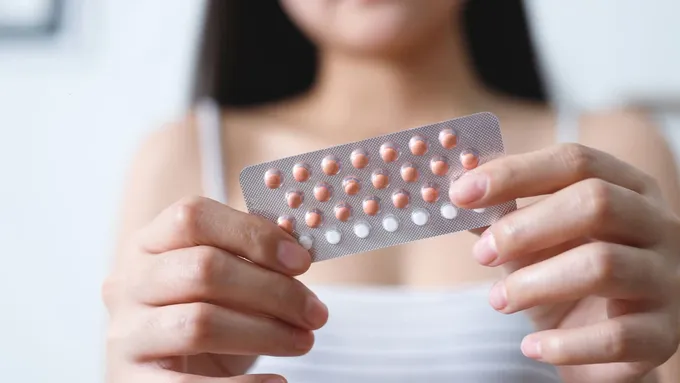How to Recognize If Your Estrogen Is Too High & Make Simple Changes
Updated October 21, 2025

Menstrual cycle changes are triggered by an everchanging balance between estrogen and progesterone. Disturbances to the balance between them can cause many abnormalities including unpredictable cycle length, longer or shorter cycles, difficulty conceiving, and even seemingly unrelated symptoms like anxiety and insomnia.
Hormone Harmony
Estrogen and progesterone are meant to exist in perfect balance with each other. Everyone with a menstrual cycle has an estrogen-dominant phase before ovulation, as well as a progesterone-dominant phase of their cycle after ovulation. Both are crucial to overall health since both hormones work together to maintain a healthy body.
However, sometimes people have more estrogen than progesterone, and this can cause issues in overall health. Some, as mentioned above, are directly related to the menstrual cycle, while others are often seen as unconnected.
You might have estrogen dominance if:
- You have long cycles and sometimes don’t ovulate
- You get the same unchanging cervical mucus patterns
- You have a tough time losing weight, and it tends to gather in your middle
- You have insomnia (and it might follow a pattern)
- You struggle with anxiety
- You have tender or lumpy breasts (and are not nursing)
- You are prone to fibroids and cysts
Recognizing an issue in your cycle is useful because it's the first step to learning how to correct the issue. However, estrogen dominance can be difficult to confirm.
How to find out if your estrogen is imbalanced
There are a few ways of figuring out if you do have a hormonal imbalance. One choice is hormone testing. Lab testing is available through saliva and blood testing. Hormone testing through saliva is preferred because it measures two separate phases of your cycle. You can do this with an at-home kit, but they can be costly (usually $200-300). If you have a supportive doctor and medical insurance, blood testing may be accessible to you.
The other accurate way is to chart your fertile signs is using a Fertility Awareness Method. If you chart your cycles, you can learn how to identify whether your estrogen or progesterone is too high or low by paying attention to your fertility signs (like your waking body temp with a basal body thermometer like Tempdrop, tracking cervical fluid, and observing cervical position).
Addressing estrogen dominance:
- Support your gut and liver. Do you know how to get rid of excess hormones you don't need anymore? The same way we get rid of everything else! Eat fiber, cruciferous vegetables, and probiotic foods. Poop regularly. Since the liver is responsible for processing everything and sending the garbage to the curb, drink lots of water, sweat it out, and avoid alcohol.
- Clean up your beauty routine. Many of our personal care products contain endocrine disrupting chemicals (sometimes called xenoestrogens), which our body can interpret as estrogen. Read the labels and steer clear of paragons, phthalates, and anything that says "fragrance" for starters.
- Drop excess weight. Take this one with a grain of salt. We are so overburdened by diet culture, and I am NOT trying to push that agenda. But it is true that fatty tissue stores estrogen and obese people tend to have higher estrogen.
- Ditch the pill (if you can). The best way to lower your estrogen is to stop putting more estrogen into your body. All combination pills contain estrogen. That doesn't necessarily mean you should switch to a progestin-only pill either. If your hormones are out of whack, it's best to let them regulate naturally if possible. Check out your non-hormonal options like barriers of fertility awareness.
If you think you might be struggling with estrogen dominance, you should contact a FAM instructor and/or a healthcare provider. Estrogen dominance isn’t necessarily dangerous, but some of the complications of excess estrogen can cause problems like tissue overgrowth and difficulty conceiving. Estrogen dominance can often be corrected naturally with some lifestyle and diet adjustments. When our hormones are in perfect balance, we will be most healthy and fertile.








